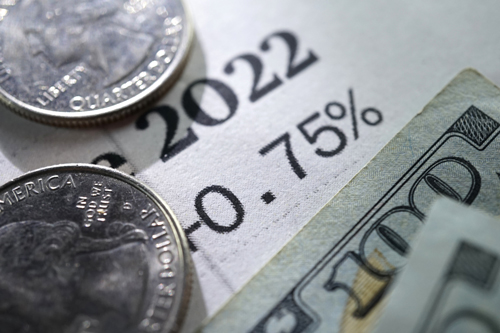A Tale of Two Inflations

Last Week In Review: A Tale of Two Inflations
This past week, home loan rates hit the highest levels in nearly a decade as inflation readings came in touching 40+ year peaks. Let’s discuss what happened and what to watch for.
Headline Consumer Inflation vs Core Consumer Inflation
Interest rates around the globe have been on the rise in response to inflation fears and uncertainty surrounding Federal Reserve rate hikes. The next Fed meeting is on May 4th and at that time the market is expecting a 0.50% hike in the Fed Funds Rate. Also on the table, is an announcement to start the balance sheet reduction, which could put more upward pressure on long-term rates.
The rate of consumer inflation will determine what the Fed will do going forward. On Tuesday, we received the important Consumer Price Index (CPI) Index. There are two inflation readings to follow, the headline figure, which includes food and energy costs, and the more closely watched Core reading, which strips out food and energy.
The headline CPI came in at 8.5% year over year. The important month-over-month reading, which determines the near-term trend, showed a higher than expected 1.2% increase or a 14.4% annualized rate!
The Core CPI reading came in at 6.5% year-over-year, driven by a relatively small 0.3% month-over-month rise. Both figures were cooler than expectations. In the words of Fed Governor Lael Brainard – this was a “welcome” sign.
The core inflation number is more closely watched by the Fed and the financial markets as that is the price of everything outside of food and energy. If core inflation continues to moderate in the months ahead, the Fed will not likely raise rates as aggressively as the markets currently fear.
Ironically, the headline and more energy-based inflation may be a reason why the core inflation number was lower. If people are paying more money to fill their tanks and heat their homes, it will come at the expense of all other purchases. How do these other products get purchased? Lower the price.
Consumer spending makes up two-thirds of our economic growth. So when you hear this fresh chatter regarding a recession in the U.S., it suggests the consumer will dramatically stop spending on items outside food and energy.
This could happen further down the road if we are unable to reign in energy costs.
Europe has Inflation Issues
Across the pond, European Central Bank (ECB) President Christine Lagarde shared these words which pushed interest rates higher around the globe:
There are “three main factors that are likely to take inflation higher” going forward.
- Energy prices are expected to stay higher for longer.
- Pressure on food inflation is likely to increase.
- Global manufacturing bottlenecks are likely to persist in certain sectors.
Note: The similar theme abroad is the high headline (food and energy) cost while their economy slows from a lack of spending outside those items. The European economy is performing worse than the U.S. and their central bank is reacting even slower to inflation than our Fed. Their interest rates are 0.50% and there is no timeline to increase them. Additionally, the ECB will continue to purchase bonds to keep rates low until the 3rd Quarter of this year.
The good news? If rates stay low around the globe, it will help keep our rates relatively low.
Shortest Unemployment Line in 52 Years
Initial Jobless Claims are being reported at levels last seen in 1970. This is wonderful for housing as jobs buy homes. A potential problem could be wage-based inflation as it takes more money to attract talent.
The Fed’s dual mandate is to maintain price stability (inflation) and promote maximum employment. We will wait to see if the Fed can perform a “soft landing” where inflation comes down without hurting the economy or labor market.
Bottom line: Interest rates remain on the rise. And the words of central bankers around the globe last week have added to the uncertainty and volatility. If you are considering a mortgage, now is an ideal time to lock in as the path of least resistance for rates remains higher.


